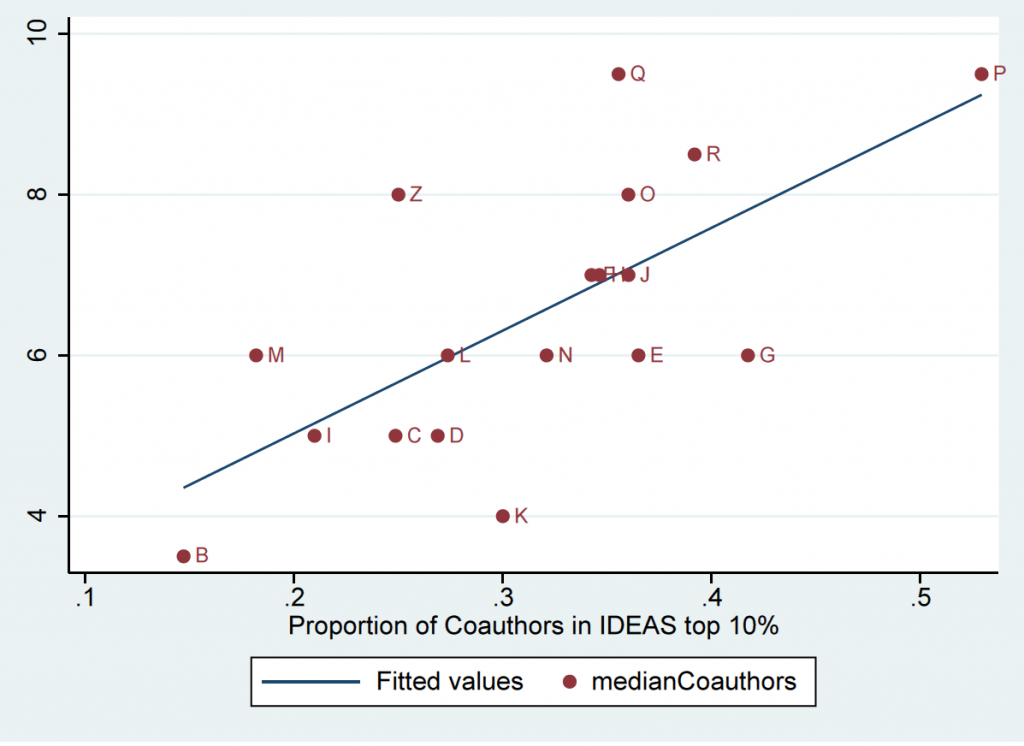Which group should you join and how much effort should you expend socializing? In their BSE Working Paper (No. 797) “Which Club Should I Attend, Dad?: Targeted Socialization and Production,” Facundo Albornoz, Antonio Cabrales, and Esther Hauk investigate the interplay and effects of a person’s optimal group membership and the amount of effort placed in socializing and producing within the group.

The importance of socialization in productive environments
People often socialize in order to better accomplish tasks or gain knowledge. This is done because the abilities and actions of those around you may have an effect on your productivity. For this reason, we tend to place a lot of effort on socialization to enhance productive outcomes: we network on the job, we form part of groups, parents pick neighborhoods or schools so that their children have the “right” peers. This socialization effort helps to increase not just the individual’s own knowledge or productivity: the resulting externality increases the overall knowledge and production made available to all other group members. The spillover requires everyone to engage in costly socialization: one’s incentive to engage in it depends on everyone else’s effort.
But there’s a catch….
A crucial part of the socialization process is to pick the groups of people with whom we want to socialize. This is important because the abilities of people in the group will matter for the benefits accruing from membership. This is especially pressing when the abilities of the individuals are multidimensional and the groups specialize in different tasks. The authors analyze this problem within a context in which parents/mentors can influence the abilities of their children for different activities (i.e., think of a parent choosing whether to enhance the ability of a child in an activity she knows well, but is not too fashionable, or an activity that is currently more profitable but which the parent knows less well). Their analysis is thus a synthesis of both the choice of production and socialization effort within a group, and the group someone might choose. This is relevant for various reasons, but in particular because with regards to policy it is easier for a government to affect the choice of investment in effort than the choice of group.
What are optimal efforts, group choices, and policy implications?
To answer this key question the authors solve for the equilibrium of a model in which a person first picks the group of people with whom they want to interact; and then chooses his investment in socialization and production within the group. Their first result is that the socialization effort is increasing in the average ability of the members within the group. This makes intuitive sense: when one stands to gain more knowledge by interacting with others, it increases the incentives to socialize so as to gain access to this knowledge. This is something that the authors prove formally and also illustrate empirically showing that scholars in more productive fields tend to have more coauthors (a measure of socialization within academia). Figure 1 shows the association between the median number of coauthors by IDEAS-RepEc field, and the proportion of authors in the Top 10% in IDEAS ranking.

As usual in problems with externalities, there is a free-rider problem: individuals will not internalize the positive spillovers of their own actions to their wider group, which leads to underinvestment in socialization and productive efforts from the social welfare perspective.
Once the production and socialization effort choice are understood, the authors turn to group choice of individuals. For simplicity, they look at two groups: a mainstream and an alternative group. The basic principle is that people will choose (self-select into) the group that will yield them the best outcome based on their own ability along the different productive dimensions, and the effort choices they expect to make, along with that of other group members, from which they benefit. The authors find that in equilibrium too few people join the alternative group even at socially optimal levels of effort; while the mainstream group becomes overpopulated. Although the conclusion is not fully robust to the particular distribution assumptions used, it is still noteworthy because it points, contrary to popular wisdom, at the possibility of too much integration into the mainstream, and not too little.
Even more surprising is the fact that it is possible to find that a government that subsidizes investments to their optimal level within groups may end up creating a situation that is worse than the one arising with no subsidy at all. This can happen because the within group subsidy can lead to an even worse misallocation across groups (in particular an overcrowding of the mainstream group) than the completely decentralized option, especially when the alternative group is sufficiently disadvantaged. This leads to a severe note of caution in this environment. In a context where people can choose group allegiance, government interventions need to consider carefully the between group choice problem.
So, Dad, which club should I join?
The authors then embed their model into one where parents can influence their children’s choices. They do so by enhancing their children’s abilities in the mainstream or the alternative group. In contrast to other approaches in the literature, the parents do not have an intrinsic preference for one or the other group. They just want their child to have the maximum utility given their own abilities and constraints. That is, their final goal is the child’s welfare, but they take into account that their own time is limited, and their ability may be higher in making the child productive in one group than in the other.
The authors show, consistently with the above findings, that if the mainstream group is very profitable, parents promote cultural conformism. More surprising is the presence of what can be called a “cultural trap.” This happens when the dominant group is not the most profitable, yet parents find it easier/less costly to provide abilities for the children in the mainstream even with abundant parental resources that could be used to counter the dominance. Finally, parents may choose to enhance their children’s ability in their own group, even if it is not the most profitable group because they do not have sufficient resources. In this way, the child will generally not overcome their own initial environment, and there will be intergenerational transmission of the parent’s cultural group so that society fragments into well-defined long-living groups.



